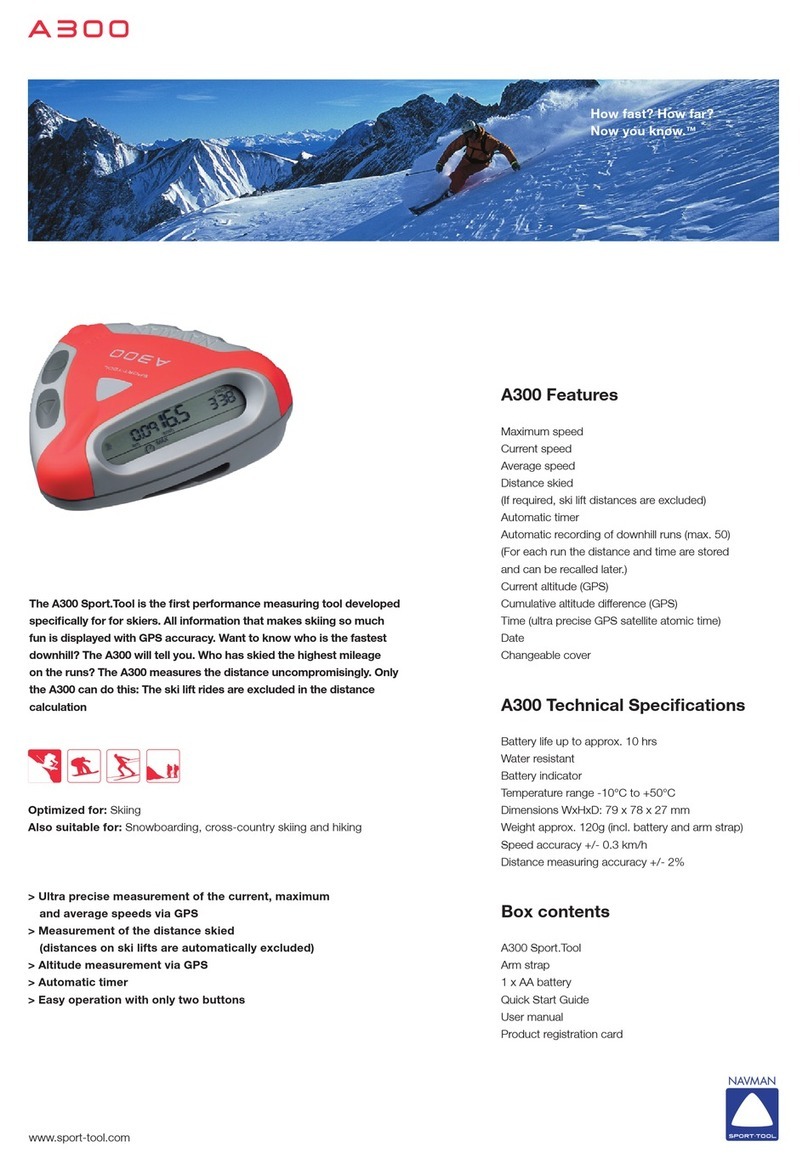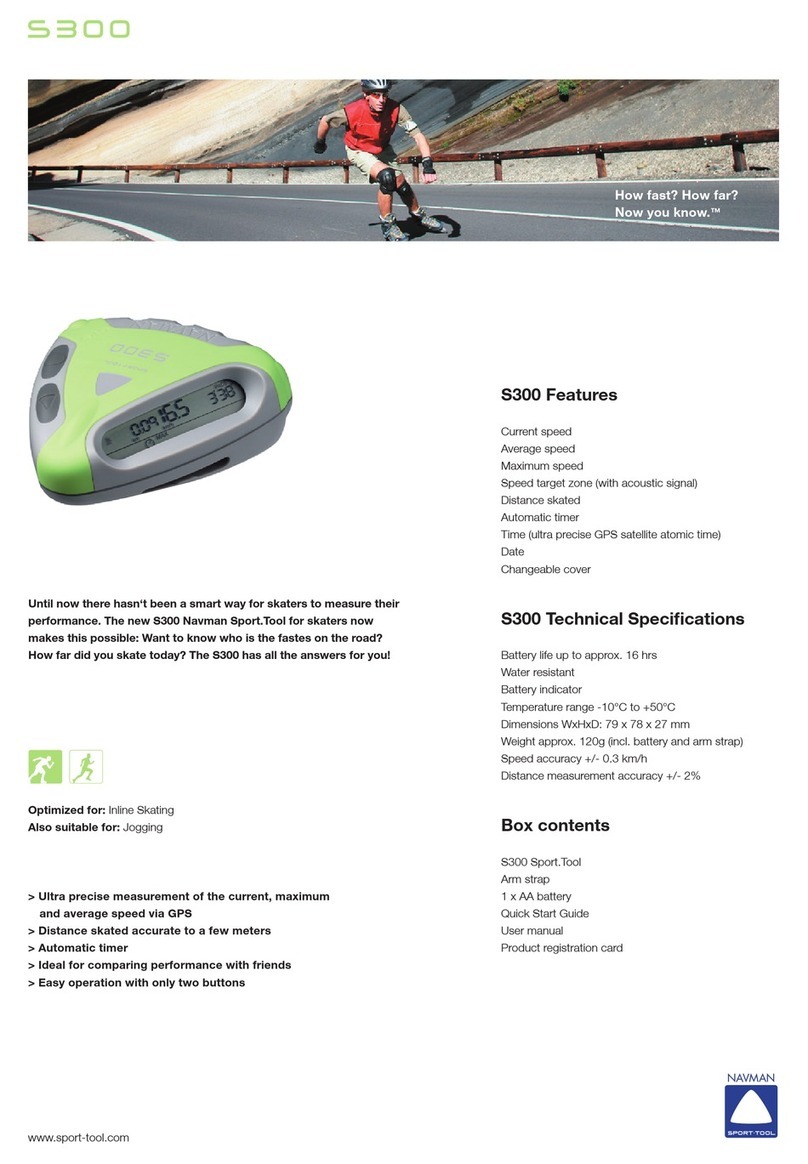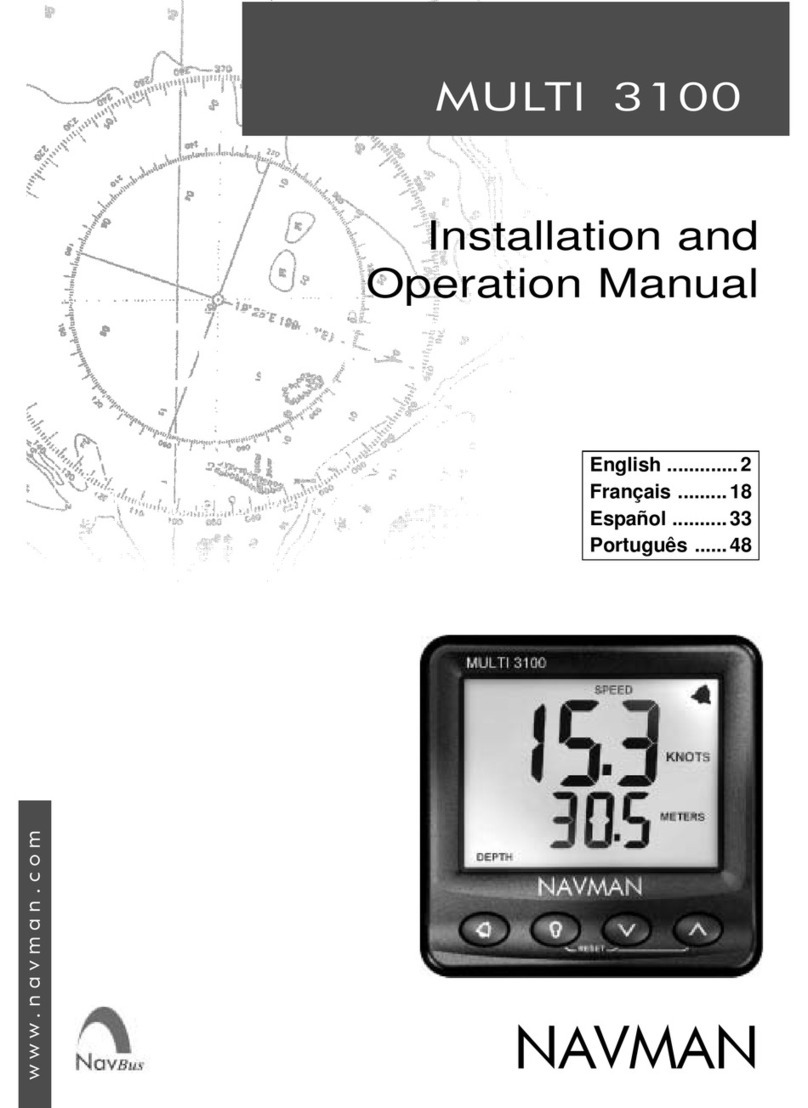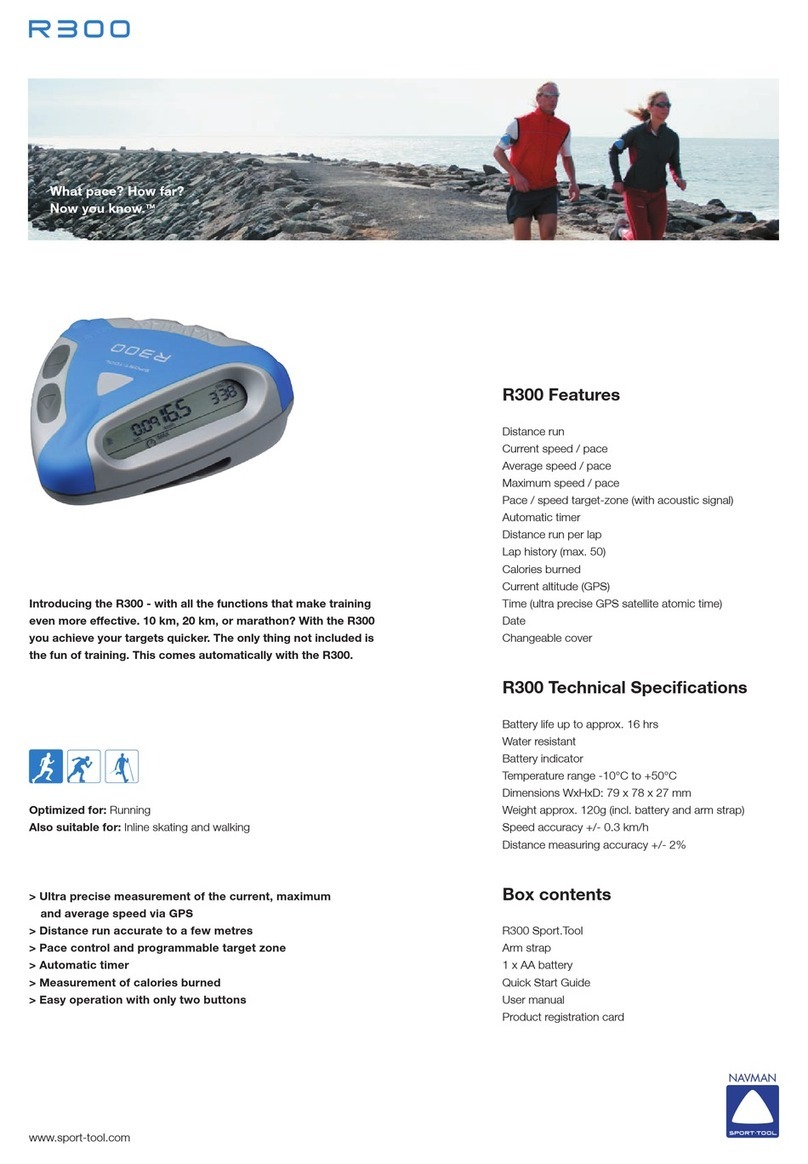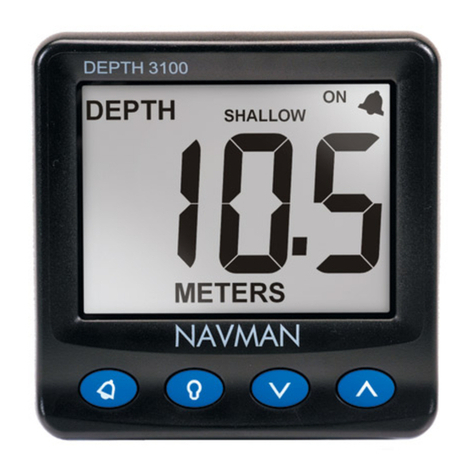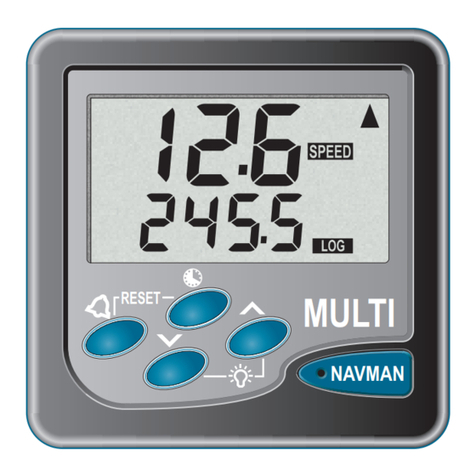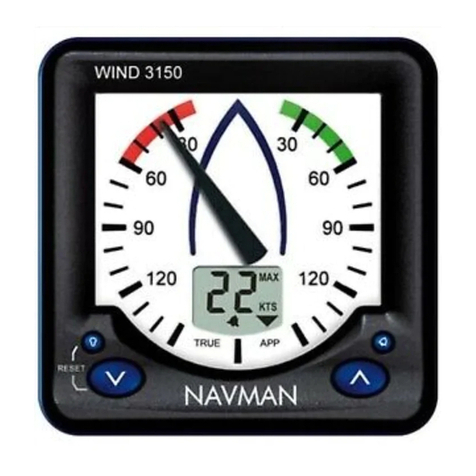5
WIND 3100 Installation and Operation Manual
NAVMAN
2 Operation
2-1 Turn on and off
Turntheunitonandoffwiththeauxiliarypowerswitch
on the boat. The unit does not have its own power
switch. When you turn it off, any settings you have
made are retained.
IfthewordSIMflashes atthetop,rightof thedisplay,
then the unit is in simulate mode (see section 2-4).
2-2 Basic operation
The keys
The unit has four keys, labelled and .
In this manual:
Press means to push the key for less than a
second.
Hold for two seconds means to hold the key
down for two seconds or more.
Press one key + another key means to push
bothkeystogether.
Set backlight for screen and keys
You can set the backlight to one of four brightness
levelsoroff(thekeybacklightdoesnotturnoff).Press
once to display the current backlight level, press
again to change the level:
Change the items displayed
If an item displays as dashes (— —) then it means
thatthevalueisnotavailable.For exampletruewind
values are not available if the WIND 3100 is not
connected to a speed instrument.
The top part of the screen displays wind direction
and the bottom part displays a speed.
Press one or more times to select:
True wind direction and speed (only available if
the WIND 3100 is connected to a speed
instrument, for example the SPEED 3100 or a
NAVMANGPS).
Apparent wind direction and speed.
Steer to wind (see section 5).
Press one or more times to change the speed
valuedisplayedinthebottompartofthescreen (see
section 4):
Wind speed, apparent or true.
Maximum apparent wind speed.
VMG, the component of boat speed parallel to
the wind (only available if the WIND 3100 is
connected to an instrument with a speed
output, for example the SPEED 3100 or a
NAVMANGPS).
2-3Alarm
TheWIND3100canbesettosoundanalarmwhen
the apparent wind speed exceeds the alarm value
(see section 4-3). When the alarm sounds, the
internalbeepersounds,the symbolonthedisplay
flashes and any external beepers or lights operate.
Press to mute the alarm. The alarm stays muted
until the wind speed drops below the alarm value.
Thealarmwillsoundagainifthewindspeedexceeds
the alarm value again.
2-4 Simulate mode
Simulate mode allows you to become familiar with
the unit off the water. In Simulate mode, the WIND
3100 functions normally except that the data from
the masthead unit is ignored and the unit generates
this data internally. The word SIM flashes at the top,
right corner of the screen.
To turn Simulate mode on or off:
1 Turn the power off.
2 Hold down while you turn the power on.
Backlight
level 2
